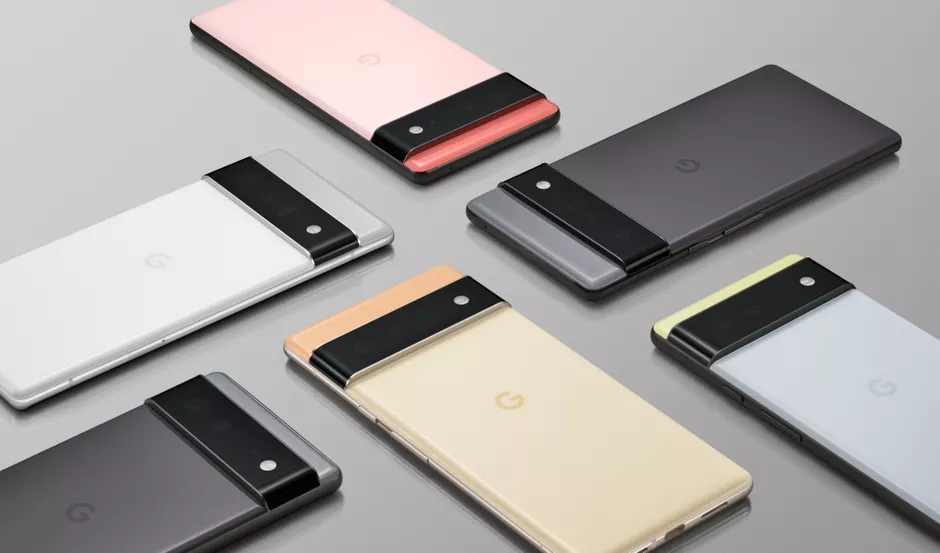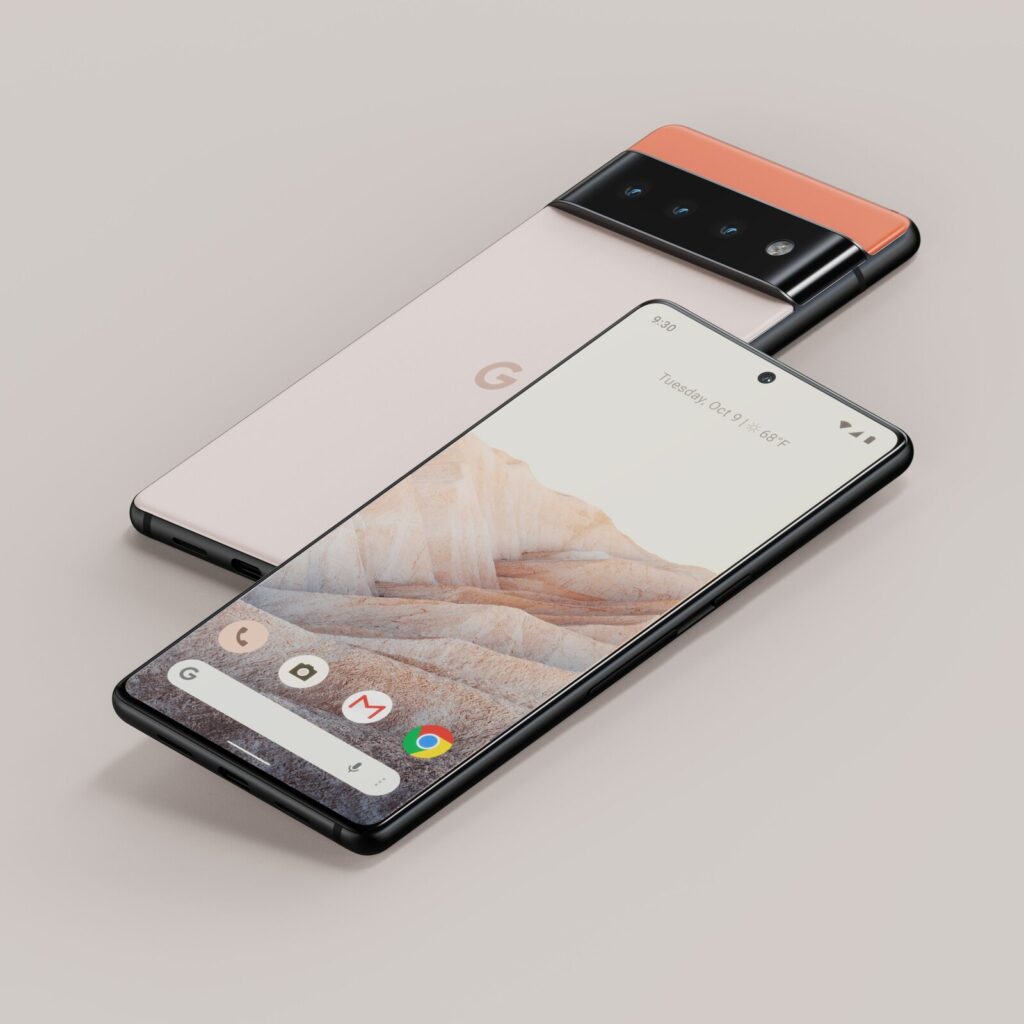
Google is officially producing its first flagship phone, and they’re competing with the best of the best. The tech giant put the word out on its next generation of premium smartphones on Monday, departing away from its usual mid-range phones.
The Verge sat down with Google’s Rick Osterloh, senior vice president of devices and services, admitted that the search giant did not have what it takes to be in the ultra-high end. However, things are different now as Osterloh noted that “this is the first time where we feel like we really have it.”
The tech giant did not release all the details on its new flagship. However, Google emphasized on the five years of R&D that were utilized into producing its newest premium products.
From an in-house chip, improved cameras, to colorful designs. Here’s everything you need to know about Google’s two different flavors of the Pixel phones: the Pixel 6 and the Pixel 6 Pro, as well as the Google-designed chipset that’s powering it.
The Design
Closely resembling Samsung’s Galaxy S Phones, both smartphones boast an almost borderless screen with the camera positioned in the center of the display. A barely raised metal rail is also located to protect the camera glass from potential harm.
The phones are built from glass and metal, ensuring a more premium touch than last year’s Pixel 5.
“We’re transforming the inside, we wanted to transform the outside at the same time,” Osterloh highlighted.
Each smartphone will come in three colors. The Pro model will be available in gold, silver, and black, while the Pixel 6 will come in coral, green, and black color options.

Jumping into the nitty gritty details, it’s important to note that the Pixel 6’s display amounts to 6.4 inches with a 90Hz refresh rate and FHD+ resolution, while the Pixel 6 Pro has a 6.7-inch 120Hz QHD+ screen.
Utilizing OLED panels, both devises will provide higher contrast and deeper black levels in comparison to LCD screens.
Google’s new Tensor chipset
After four years of research, the devices are the first in line to utilize a Google-designed processor under the name of “Google Tensor.”
Rather than seeking the support of off-the-shelf processors from a different company, Google is designing its own system-on-a-chip (SoC) to offer the highest quality of machine performance as well as artificial intelligence (AI).
“It’s definitely very different than just another co-processor,” Osterloh told The Verge. “Like with any SoC, we license a lot of technology into it, but this is our design, and it was designed specifically with the purpose of driving our ML and AI forward.”
The new in-house chip’s capabilities affect almost every function the smartphones encompass. One impressive feature is the ability to live translate. During Google’s demo, a video of a French speaker giving a presentation was played. The head of Google’s development of gadgets was not only able to turn on live caption, but also enable live translation from French to English.
“You can almost envision Tensor as being built to perform computational photography for video,” Osterloh noted. “To be able to process machine learning in real-time on our videos as they’re going is a big change from where we’re at.”
Google’s Live Caption and Interpreter Mode options can also be found on previous devices. Yet, using both features simultaneously was never an option, simply because other chips do not have the ability to deliver the kind of AI and machine learning performance that Google’s Tensor provides.
Camera
Camera upgrades aren’t excluded from the picture, as both camera’s main wide-angle sensor takes in 150 percent lighter.
If you’re a photography enthusiast interested in purchasing the Pixel 6, you might want to think again as only the Pro model will have a third telephoto lens with a 4x optical zoom.

Unfortunately, Google isn’t sharing specs on the camera anytime soon, but the company has confidently stated that the Tensor chip will tremendously improve the photography and videography quality for both devices.
For example, Osterloh displayed an extremely crisp and sharp picture of a child playing excessively during the shoot.
The reason behind the great camera quality is the fusion of images from the main camera sensor and the ultra-wide camera sensor, which activated several machine learning functions such as face detection and motion recognition algorithms.
Price
Given that Google’s Pixel 6 and the Pixel 6 Pro are considered high-end smartphones, their pricing is expected to be at a premium standard. Osterloh, however, did not specify the exact pricing list, but it is certain that Google’s smartphone carrying its own exclusive chip will not be less than $1,000.
Release Date
Based on reviewing Google’s history, the multinational tech company has unveiled a new Pixel phone in October every year since 2016, except for the Pixel 5, which was announced in September of last year. Be that as it may, it’s important to acknowledge that 2020 witnessed unprecedented obstacles, which shuffled several phone releases schedules.
Google’s Pixel release dates continue to follow a specific pattern, as the company usually put its products for sale within a week or two of being announced. Hence, it’s expected that both devices will be released within the month of October.